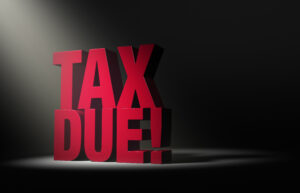An Artistic Way to Pay Your Taxes

Many wealthy individuals enjoy collecting things, including artwork. While artwork can be a source of income for some, as well as solely a collectible for others, it can’t be used it to pay your taxes. Well, at least not in the United States, anyways. However, there are some countries in which artwork is a completely acceptable way to pay your taxes.
In the United Kingdom, for example, between the years 2009 and 2013 alone, taxpayers used £124.5 million worth of art to reduce their tax bill. UK citizens can even get the full fair market value off their art without having to sale it. Plus they don’t have to pay taxes on any gain. The program used to be mainly for estate taxes, but since 2013 residents of the UK can use it to settle their unpaid taxes.
Meantime, in Mexico, the art-for-taxes program is even sweeter, especially for artists, who can actually donate their works instead of paying taxes. The program allows artists to donate the same amount of artwork as the value of the pieces they sell each year. It not only encourages talented artists to continue creating, but it has also helped the country accumulate a large and valuable collection of some the country’s most recognized artists.
Although this program seems to work well in these countries there is no such program in the U.S. However, for professional artists in the U.S. there are many tax deductions available, which can help reduce their tax bill. So although artists and collectors might not be able to pay the IRS in paintings and sculptors, with the right tax planning help from GROCO they can still come out ahead.
IRS Preventing Audit
IRS Preventing Audit Do you want an IRS agent to make a visit to your office? I don’t know many people who do, but knowing strategies to prevent an unwanted visit could certainly save you from an extra bit of stress in life. Only one percent of taxpayers yearly are selected for IRS audits, but…
Tips for the Self Employed in Avoiding an IRS Audit
Tips for the Self Employed in Avoiding an IRS Audit If you are self-employed, the chance that you have of being selected for an IRS audit will be closer to your ballpark. The IRS looks for red flags that when processing tax returns, targeting individuals to potentially audit. Self-employment is a flag in itself as…
5 Steps to Becoming a Millionaire
5 Steps to Becoming a Millionaire In 2011, the number of households in the United States worth over $1 million was 8.6 million. Although the thought of acquiring a million dollars may be a whimsical fantasy for some, it is not out of reach. With careful saving and investing, becoming a millionaire is possible if…
Ten Questions That You Should Ask Prior to Purchasing a Stock
1. How does the company make money? The first thing that you should understand is how the company earns money. Just because everyone else is buying the stock and the price has run up tremendously does not mean that you should also be jumping on the bandwagon. I suggest that you review the annual report…



